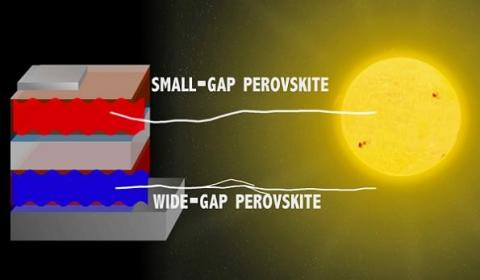Researchers at Stanford University and Oxford University have reportedly combined two perovskite materials to produce a stable solar cell with efficiency over 20% that can be printed on a plastic substrate. The teams have developed four and two-terminal perovskite-perovskite tandem solar cells with ideally matched bandgaps. Each cell is printed on glass, but the same technology could be used to print the cells on plastic.

They developed an infrared absorbing 1.2eV bandgap perovskite, FA0.75Cs0.25Sn0.5Pb0.5I3, that delivers 14.8% efficiency. By combining this material with a wider bandgap FA0.83Cs0.17Pb(I0.5Br0.5)3 material, a monolithic two terminal tandem cell provides efficiencies of 17.0% with over 1.65 V open-circuit voltage. The team has also mechanically stacked four terminal tandem cells and obtain 20.3% efficiency.
The infrared absorbing perovskite cells are also said to exhibit excellent thermal and atmospheric stability and enable 'all perovskite' thin film solar cells to reach the highest efficiencies in the long term at low costs.

